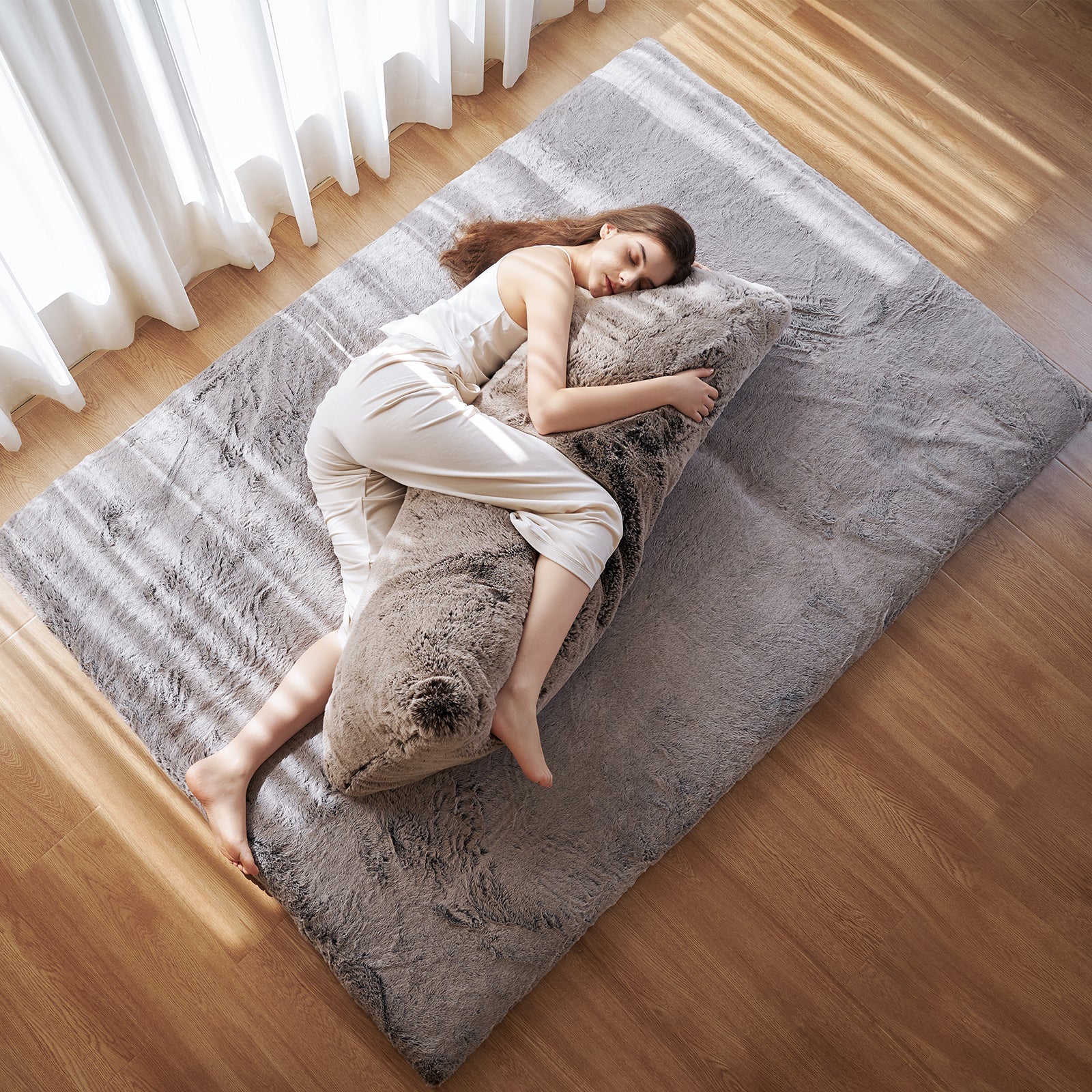Sleep is essential for overall health, but have you ever thought about how your sleep position affects your face? Most people focus on getting enough rest, but few realize that their sleeping posture could be causing skin issues, wrinkles, or even facial asymmetry. Let’s dive into the science behind it and explore what you can do to keep your skin looking its best.
How Sleep Position Impacts Facial Health?
Your skin is sensitive and constantly in contact with your pillow while you sleep. The pressure and friction from prolonged contact can lead to lasting effects on your facial skin. Let’s break down the effects of different sleeping positions:
1. Side Sleeping and Facial Asymmetry
When you sleep on your side, one side of your face is pressed against the pillow for hours, causing continuous compression and friction. Over time, this can lead to:
(1) Asymmetrical facial features: One side of the face may appear more compressed or aged than the other.
(2) Sleep wrinkles: Unlike expression lines, sleep wrinkles form due to repeated pressure on the skin, usually forming on the forehead, cheeks, and around the eyes
(3) One-sided puffiness: Gravity can cause fluids to pool on the lower side, leading to morning puffiness.
2. Stomach Sleeping – The Worst for Your Skin
Sleeping on your stomach puts the most pressure on your face, increasing the risk of:
· Deep sleep wrinkles from constant friction.
· Overall facial puffiness due to fluid retention.
· Skin irritation and breakouts from prolonged contact with bacteria on your pillowcase.
3. Back Sleeping – The Best for Facial Health
Sleeping on your back is the most beneficial for maintaining facial symmetry and reducing wrinkles. Benefits include:
(1) Even weight distribution: No pressure on any specific part of the face.
(2) Reduced friction: Less contact with pillowcases means fewer sleep-induced wrinkles.
(3) Better circulation: Gravity keeps blood and fluids evenly distributed, minimizing puffiness.
How to Train Yourself to Sleep on Your Back for Better Skin?
Experts recommend training yourself to sleep on your back to prevent sleep wrinkles and facial asymmetry. Here’s how you can do it:
1. Adjust Your Bedding for Better Support
Upgrading to a firmer mattress helps distribute weight evenly, reducing pressure points and making it easier to stay on your back. A well-balanced option, such as our Premium Futon Mattress, offers both the support needed for proper spinal alignment and the comfort to help relieve back pain and enhance sleep quality.

2. Use the Right Pillow
A contoured pillow that supports your head and neck can help keep your face from turning to the side while you sleep.
3. Upgrade Your Pillowcase
Replacing your cotton pillowcase with silk or satin can reduce friction, minimizing the risk of wrinkles and fine lines.You might also consider our bamboo pillowcase, which offers the same silky feel but is even softer, more breathable, and naturally antibacterial—helping your skin stay fresh and well-rested overnight.

4. Support Your Body with Pillows
To prevent rolling onto your side, place pillows strategically around your body:
· A pillow under your knees can provide additional support and comfort.
· Placing pillows on both sides of your torso discourages movement while you sleep.
5. Gradually Adjust Your Sleeping Habit
Every night, start by lying on your back. It’s okay if you roll over during sleep—your body will gradually adapt with time. Patience and persistence are key; stick with it, and soon sleeping on your back will feel natural.
Other Effective Strategies for Healthy Skin
Beyond adjusting your sleep position, here are some skincare habits to protect your face health:
· Pre-Sleep Skincare: Use a night cream packed with hyaluronic acid, ceramides, and peptides to lock in moisture and combat aging. Pair it with a retinol or collagen-boosting serum to enhance skin elasticity and reduce the appearance of sleep lines.
· Stay Hydrated (in Moderation): Keep your body well-hydrated throughout the day and drink a small amount of water before bed to nourish your skin from within, minimizing morning dryness and dullness.
· Avoid Alcohol and Excess Salt Before Bed: High sodium and alcohol intake can lead to fluid retention and puffiness, causing morning wrinkles and loose skin.
· Adjust Your Diet: Include antioxidant-rich foods like blueberries, nuts, and avocados to strengthen your skin’s defenses. Consume adequate collagen and reduce high-sugar, high-fat foods to prevent dullness and sagging.
· Maintain a Consistent Sleep Schedule: Aim for 7–9 hours of quality sleep to support skin repair and reduce dark circles. Avoid late nights and limit screen time before bed to minimize blue light damage.
· Reduce Stress: Practice yoga or meditation to lower cortisol levels, preventing stress-related breakouts and sensitivity. Gentle facial massage can boost circulation and bring out a natural glow. A positive mindset also helps keep skin issues at bay.
Conclusion
Your sleep position plays a significant role in your facial health. Side and stomach sleeping can contribute to wrinkles, puffiness, and facial asymmetry due to prolonged pressure and friction against the pillow. In contrast, back sleeping is the best way to minimize these effects, promoting even weight distribution and reducing sleep-induced skin issues.
Training yourself to sleep on your back with proper bedding, supportive pillows, and a smooth pillowcase can help protect your skin while improving overall sleep quality. However, optimizing your skincare routine, staying hydrated, maintaining a healthy diet, and managing stress are equally essential for keeping your skin youthful and radiant.
By making small adjustments to your sleep habits and lifestyle, you can effectively prevent premature aging and enhance your skin’s health for the long term.

